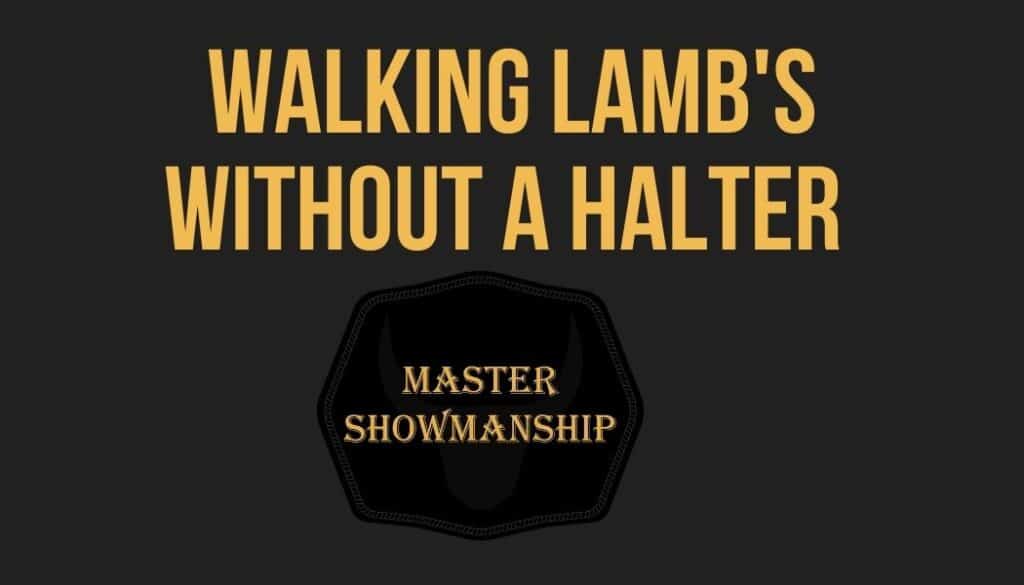
You are going to begin your training with your lamb’s on the halter so that you can tie them and work them easily at a show. You can also transport them easier and walk multiple lamb’s at once. But you need to transition off of the halter quickly. I suggest that you leave the halter on to begin.
Bunch the lead from the halter up in one hand, and place that hand under the lamb’s chin and your other hand behind his ears. Push with the hand behind his ears and see if he will just move forward.

If he will not move when you ask, leave one hand under his chin and use the other hand to pull on the halter. Usually he will respond to the halter and move forward. This can be rather awkward, so experimenting at this point in the process is the key. You have an advantage, since this lamb has already been halter trained. You will find that it doesn’t take long for him to transfer over to walking without the halter.

Once you are confident enough to take off the halter altogether, go ahead and do it, but do not let your animal escape or he will remember that, and be that much more likely to try again.
Keeping your lamb moving
Once you are comfortable without the halter, and your lamb isn’t constantly trying to escape, you can start using better tactics to get the lamb to walk forward. When you push or pull using the lamb’s head you discourage the lamb from walking with its head up, so you want to get out of that stage as quickly as possible. Use only one hand under the chin to hold the lamb and use your other hand to reach back and lift the tail pushing your lamb from behind; or gently slap the lamb’s ribs with the flat of your hand or your fingertips. Lifting the tail, of an animal is very noticeable in the show ring and makes the lamb arch is back in a way you never want. Because of that, use the ribs method as much as possible. Do not hit your animal; it is just a rhythmic tapping as you walk around the ring.
You are probably going to use this method no matter how well trained your animal is, to speed up his walk in the show ring. However, you do not want it to look like your lamb won’t walk on its own so be careful that you do not rely on the tapping very much. Be sure to modify and play it down as much as possible. Practice doing it on the opposite side from the judge so it is not noticeable or distracting. Also, be sure you are not hitting too hard. As a showman it is your job to treat your animals humanely and to prove it to both the judge and the public who are watching.
The lesson above is from my book Show Your Way To The Top on sheep showmanship. If you would like a copy or want to learn more, go to mastershowmanship.com/shop
Helpful tips directly in your inbox!